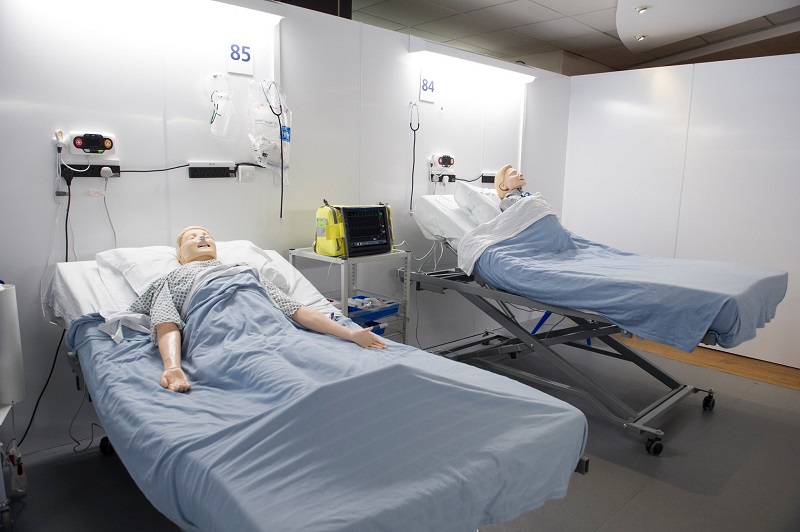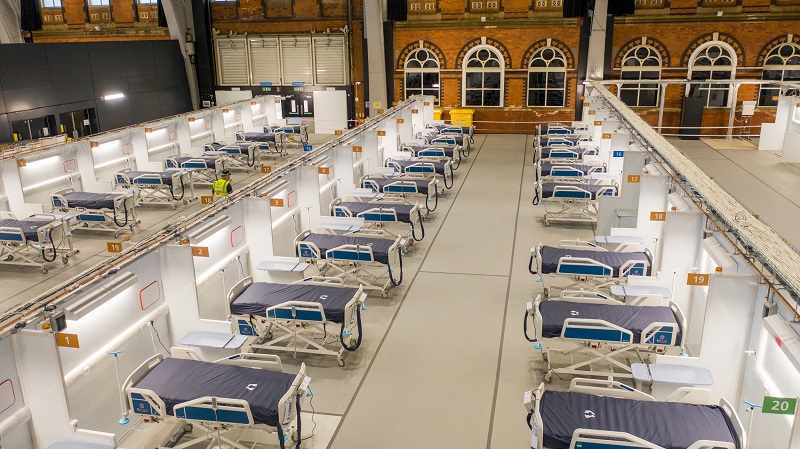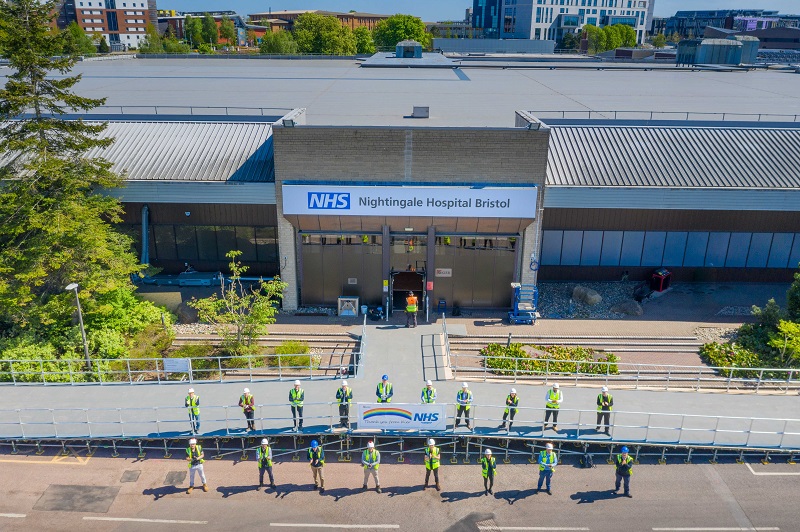In the latest in a series of special reports covering the sector’s response to the coronavirus outbreak, BBH editor, Jo Makosinski, interviews Nick Fairham, architect director at BDP, which was responsible for drawing up plans for six COVID-19 emergency hospitals in England and Wales
When the coronavirus outbreak hit UK shores, the NHS experienced the biggest challenge in its history.
With confirmed cases rising by the day, intensive care units at hospitals up and down the country were at breaking point.
And, as the country went into lockdown, medical staff were brought back from retirement, and the pressure on the system was immense.
It was clear the existing hospital structure could not cope and a new solution was needed – and fast!
It was quickly identified that exhibition and conference spaces could be the answer as these have good services infrastructure and are, by their very nature, extremely flexible in their design
Late one March evening, BDP principal, James Hepburn, sat down for a Skype catch-up with his best friend, Matt Shaw.
Both their partners are anaesthetists and Shaw is an orthopaedic surgeon and chief executive of Great Ormond Street Children’s Hospital.
The chat turned to the growing COVID-19 crisis and the alarming statistics coming out of Italy.
And, when Shaw commented on the shortage of beds in London, this sparked an idea in Hepburn.
At work the next day, he called a few colleagues together to discuss how the country could build the necessary new infrastructure as quickly as possible.
New ideas
From their brainstorming, sketching, and calculations emerged a short paper and model outlining how exhibition centres might hold the answer.
Fairham explains: “James is an engineer and he realised that what was needed were buildings that were flexible, readily available and had good power supplies and ventilation already in place.
“To create these from scratch would have taken a lot of time, but from the discussions it was quickly identified that exhibition and conference spaces could be the answer as these have good services infrastructure and are, by their very nature, extremely flexible in their design.
“It was clear that hundreds of beds would be needed, so they downloaded the floor plans for the ExCeL centre in east London.
“And, on 22 March, BDP responded to a call for assistance and was on site the next day to start work with a team of specialist healthcare architects, engineers, and designers.”
Something I will take away from this is getting a consensus across the whole team at the very-earliest stage as to what the project is all about
This marked the start of the design practice’s involvement in what would become an incredible national effort to create temporary ‘field hospitals’ up and down the country.
“Building on the experience from ExCeL, we made early decisions with confidence at the NHS Nightingale Hospital Bristol,” said Fairham.

The team mocked up bed bays as part of their design work
Careful planning
“There was lots of work carried out to mock up bed bays and we used conference exhibition partitions to create these.
“We then had to look at the other facilities we would need, such as work areas, clean and dirty areas, sluices, side rooms and staff entrances and exits.
“We looked at how we would separate flows and how the patients and staff would enter and leave the building, including ‘donning and doffing’ of PPE.
“We also looked at the necessary equipment and how this would be brought in and housed.
“Medical gases like oxygen, for example, needed to be piped in and this was not something that was already in place so had to be carefully planned.”
Around the main hospital building, modular and temporary units were also needed to provide ancillary facilities such as shower, toilets and staffing areas.
And much of the equipment needed to kit these out was available following the cancellation of major summer events such as Glastonbury.
Most of the discussions that led to the final plans were done remotely through teleconferencing and were designed in BIM tool, Revit.
Fairham said: “Working together across industry has been key.
An unprecedented approach
“Something I will take away from this is getting a consensus across the whole team at the very-earliest stage as to what the project is all about.
“Usually there are numerous consultations and stakeholder engagement events and this takes time, with everyone having a different idea of what they want to achieve.
“In this case, there was a key brief and everyone bought into it straight away and that’s quite a unique experience.
It is the scale, timeframe and purpose of this emergency facility that distinguishes it from any previous healthcare projects
“I would love to see a point where we are able to do that effectively on all projects moving forward.”
During the Nightingale Bristol project, at the end of each day a member of the team from contractor, Kier, would put together a brief, listing what had been done that day and the plan for the following day.
This ensured the project was able to be completed in only 20 days.
“So many meetings I attend I spend longer driving to and from them than I do in the meeting itself – time that could be spent on the design”, says Fairham.
“Another thing I will take away from this experience is that I would like to see more design work done remotely.”
Based on the learnings from the ExCeL project, BDP drew up an NHS Nightingale instruction manual, showing the fit-out processes and strategies used on the temporary hospital.
This was then used in the creation of other emergency facilities in Bristol, Birmingham, Harrogate, Cardiff, and Manchester.
And it has been extensively downloaded from the practice’s website.

The emergency hospitals were a major feat of design and engineering
“Delivering hospital facilities in exhibition centres and stadiums is unprecedented,” said Fairham.
“For several weeks now our team has been busy working long hours and weekends to ensure the temporary hospitals are delivered as quickly as possible – it’s a high-pressure, fast-paced environment where everyone is working collaboratively to deliver these vital beds.
“And each project, while similar in theory, has had its own challenges.”
For example, the NHS Nightingale Hospital Bristol is based at the Exhibition and Conference Centre on the University of the West of England’s Frenchay campus.
This former Hewlett Packard building had great power and ventilation, but an area of plant right in the middle, which had to be stripped out before the bed bays and associated facilities could be installed.

The NHS Nightingale Hospital Bristol is based at the University of the West of England, a former Hewlett Packard building which offered great ventilation and power, but had to be stripped of an area of plant before the bed bays could be installed
And the Harrogate Convention Centre is made up of a series of exhibition spaces, unlike the ExCeL, so the floorplan and the way the service worked had to be planned differently.
“Every time we completed one, we had unique challenges,” said Fairham.
It is has been a remarkable story and everyone involved has felt real pride in being able to deliver these facilities in just a matter of days
“A major common challenge was availability of materials. When we found a particular material or solution, we would use most of it on that hospital and so we would have to find something else for the next one, and so on.
“It was really important to look at how each facility would flow and that is where technology played a key role.”
He concludes: “It is the scale, timeframe and purpose of this emergency facility that distinguishes it from any previous healthcare projects.
“It is has been a remarkable story and everyone involved has felt real pride in being able to deliver these facilities in just a matter of days.
“BDP will look back on it as a real milestone in its history.”

